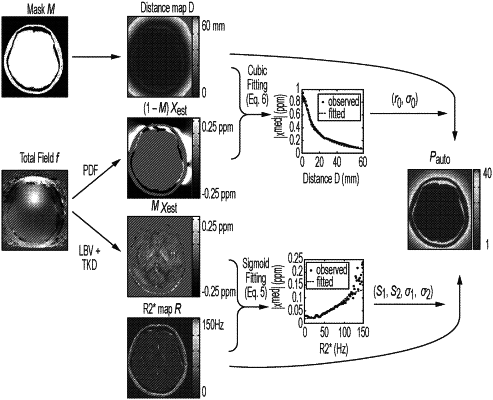| CPC G01R 33/5608 (2013.01) [A61B 5/0042 (2013.01); A61B 5/055 (2013.01); A61B 5/7221 (2013.01); A61B 5/7267 (2013.01); G01R 33/56536 (2013.01); G06T 7/0012 (2013.01); G06T 2207/10088 (2013.01); G06T 2207/20081 (2013.01); G06T 2207/20084 (2013.01)] | 19 Claims |

|
1. A system for generating one or more images of an object, the system comprising:
a processor;
a display communicatively coupled to the processor;
an input interface communicatively coupled to the processor;
a non-transitory computer storage medium encoded with a computer program, the program comprising instructions that when executed by the processor cause the processor to perform operations comprising:
acquiring time-resolved image data capturing tracer passage in tissue of the object;
solving an inverse problem of fitting the image data to a transport equation or a concentration—transport relationship that is expressed as a relationship between a concentration of the tracer at a given location and transport parameters at that location, wherein the relationship comprises a temporal change of a local concentration at the given location and a local divergence of mass flux, wherein the mass flux comprises the concentration multiplied by a velocity, and wherein solving the inverse problem comprises:
estimating a transport distribution of the tissue of the object using prior knowledge about a tissue transport parameter distribution characterized by an artificial neural network or using tissue morphological information having a sparsity characterized velocity distribution; and
generating one or more images of the object based on the estimated transport distribution of the object; and
presenting, on a display device, the one or more images of the object generated based on the solving of the inverse problem.
|